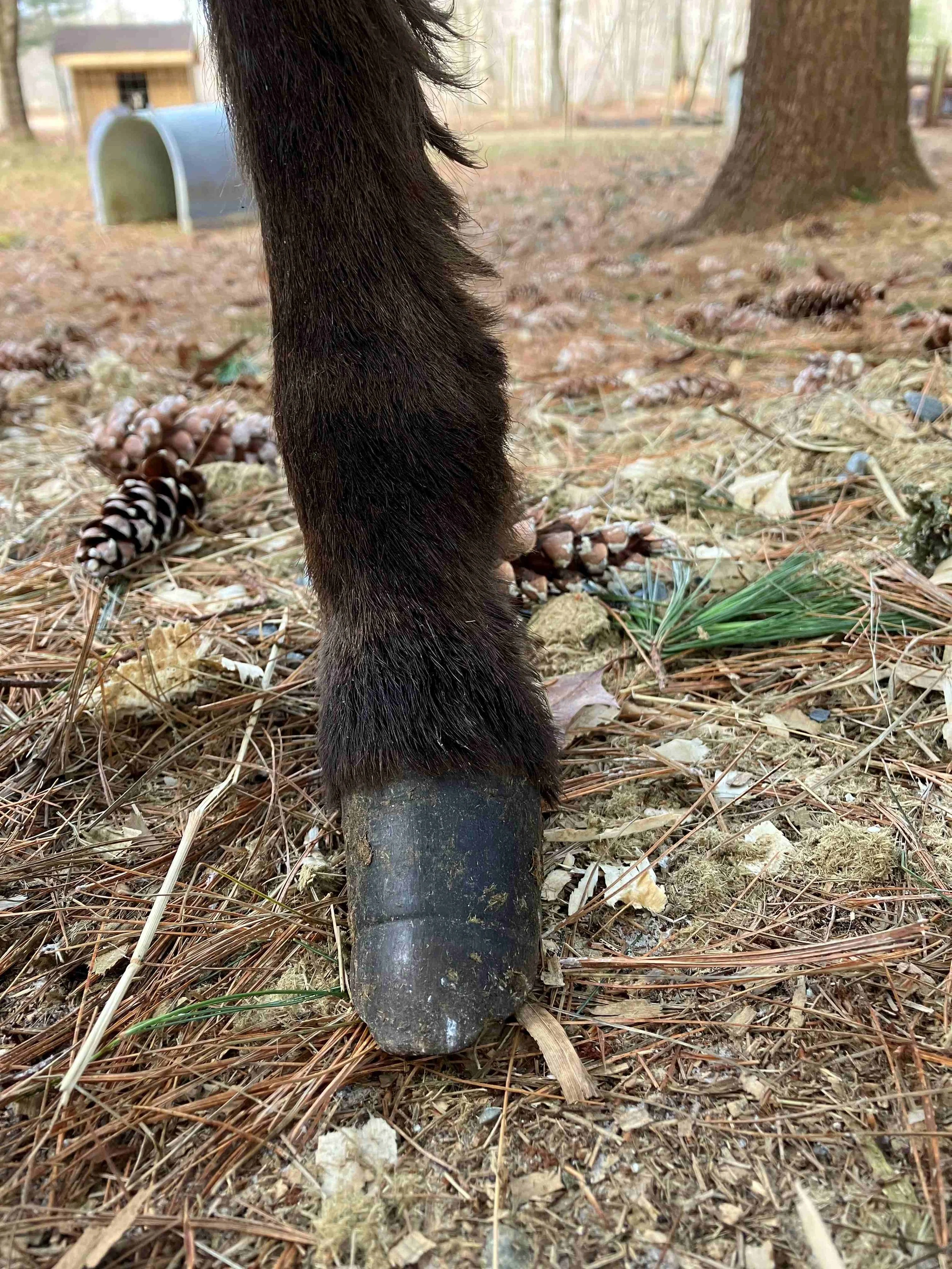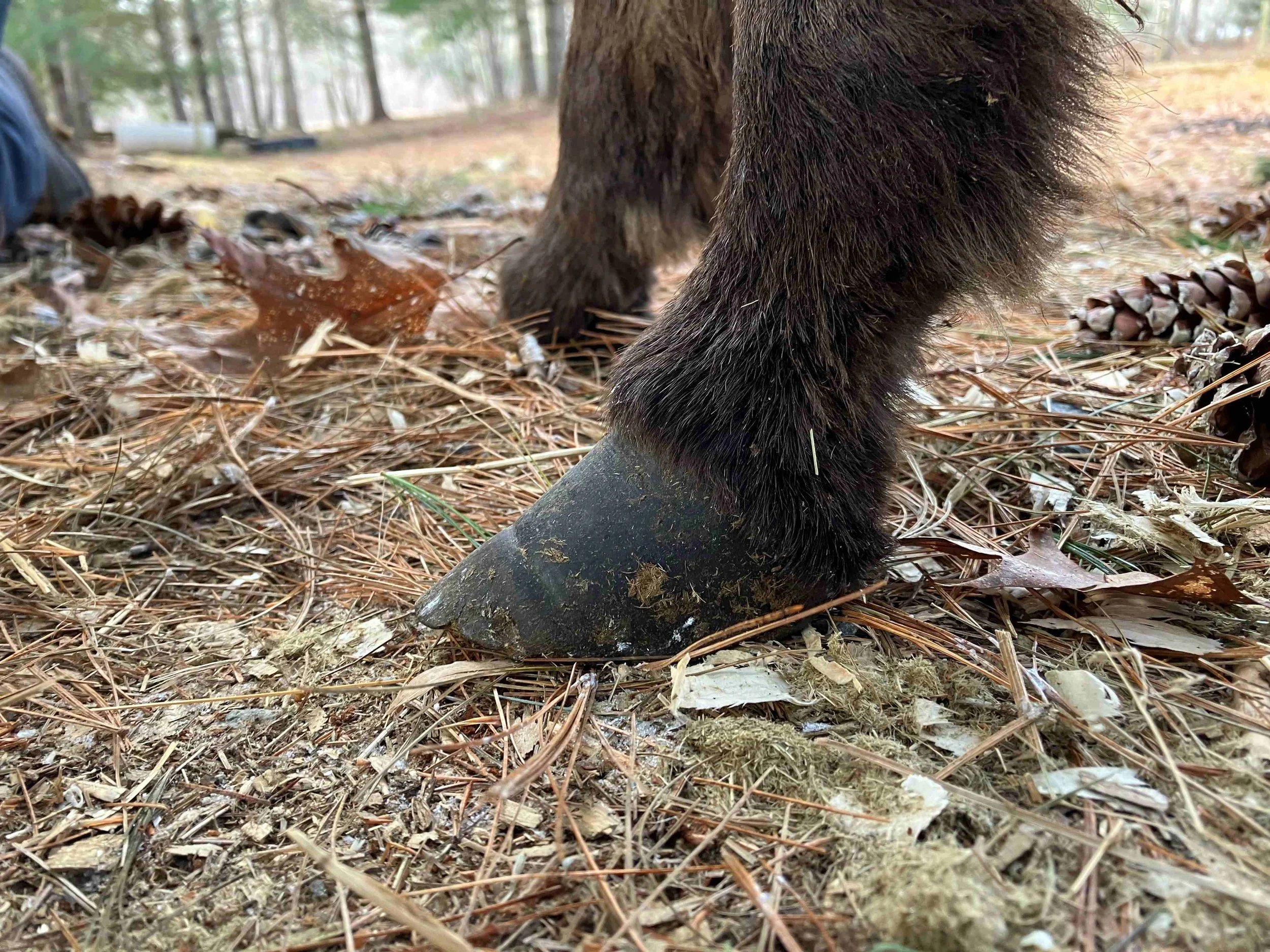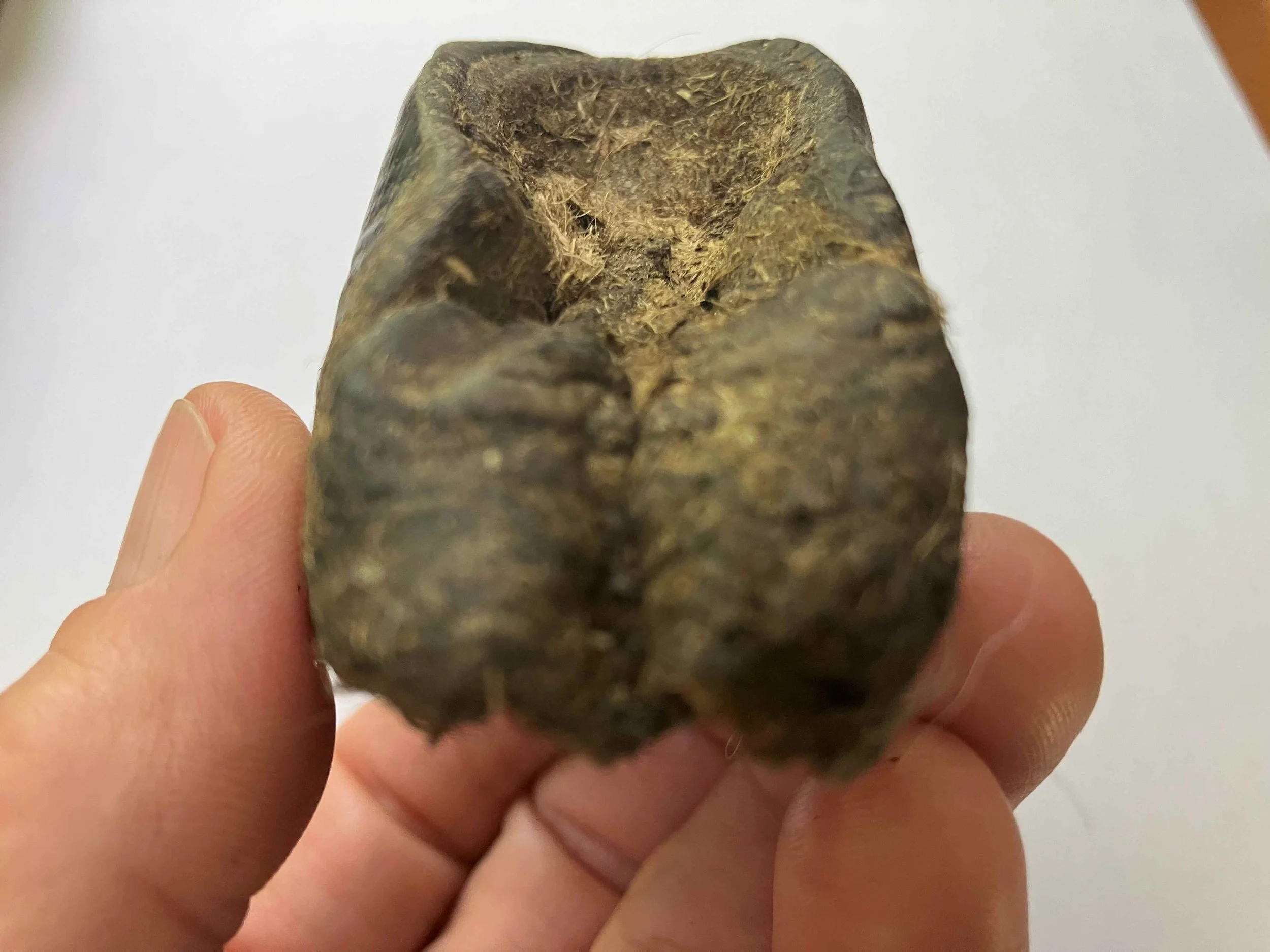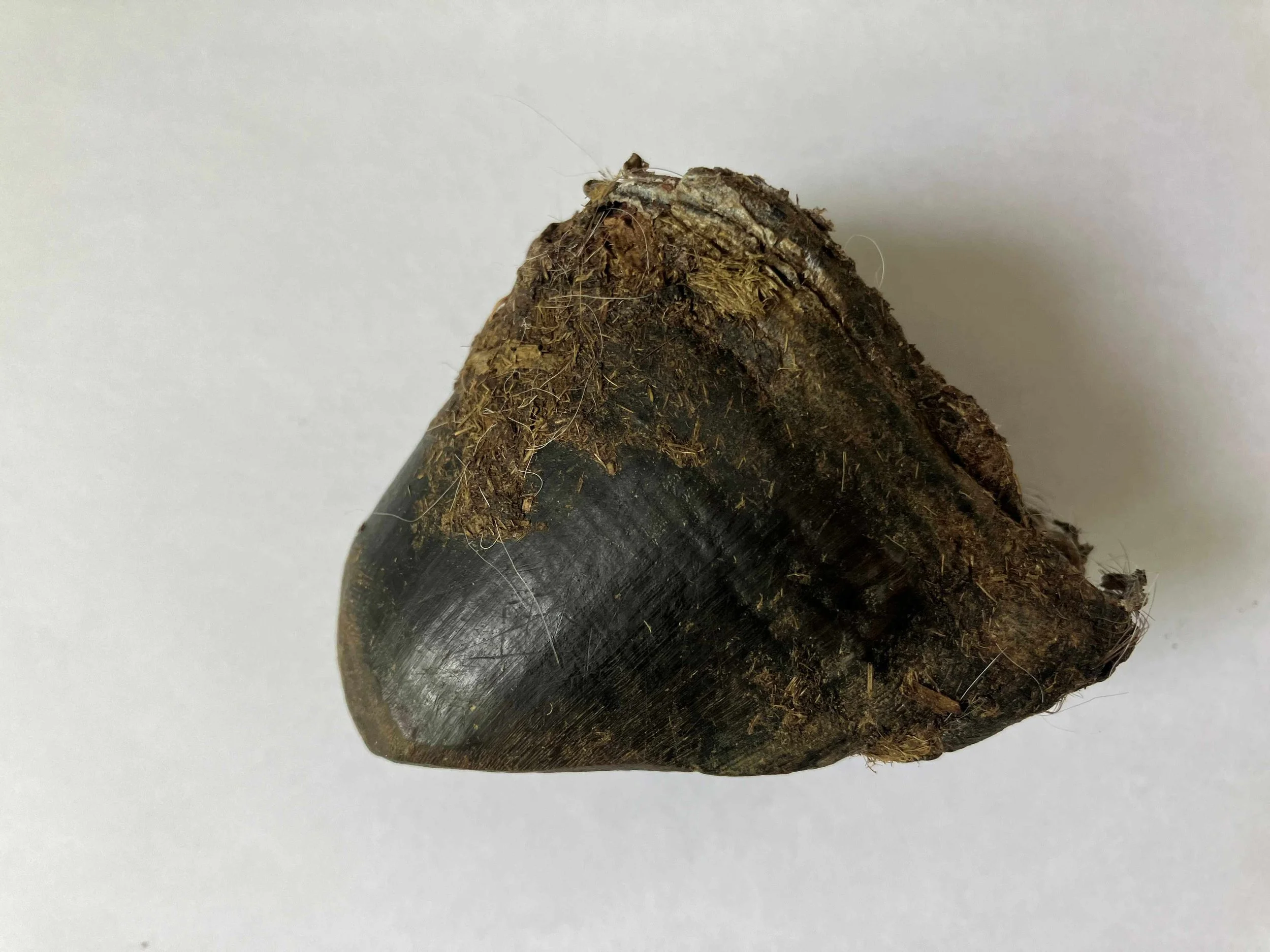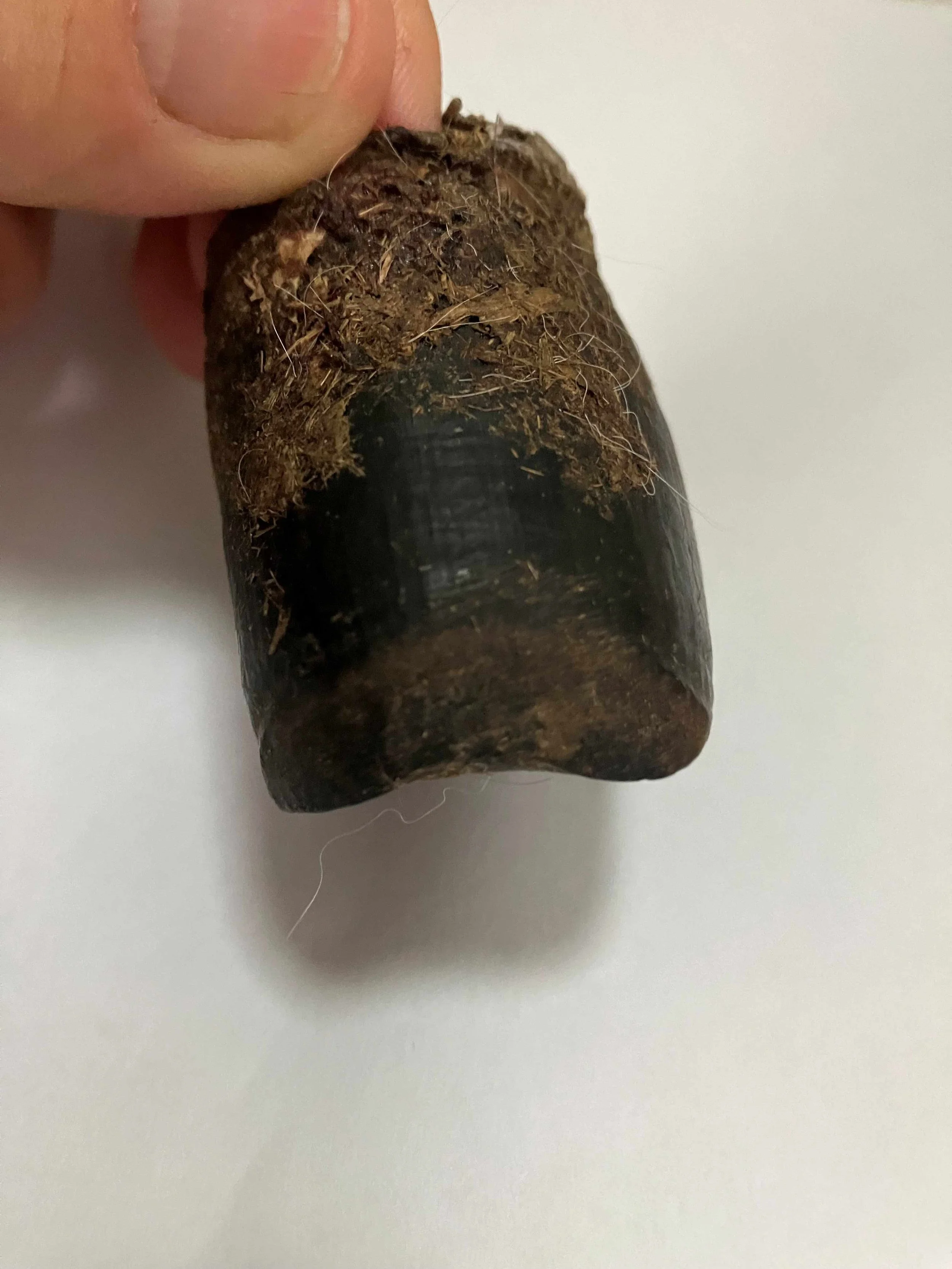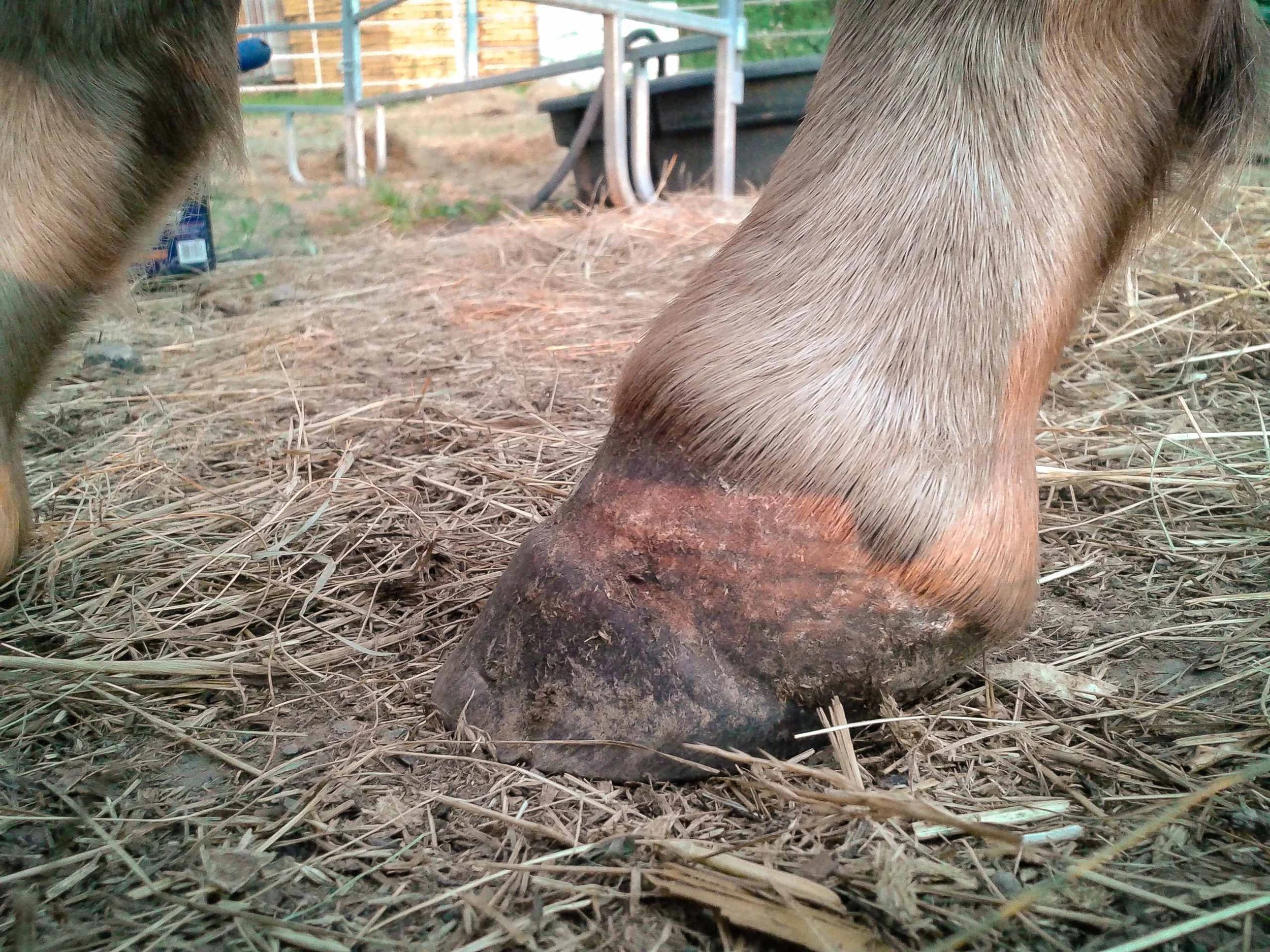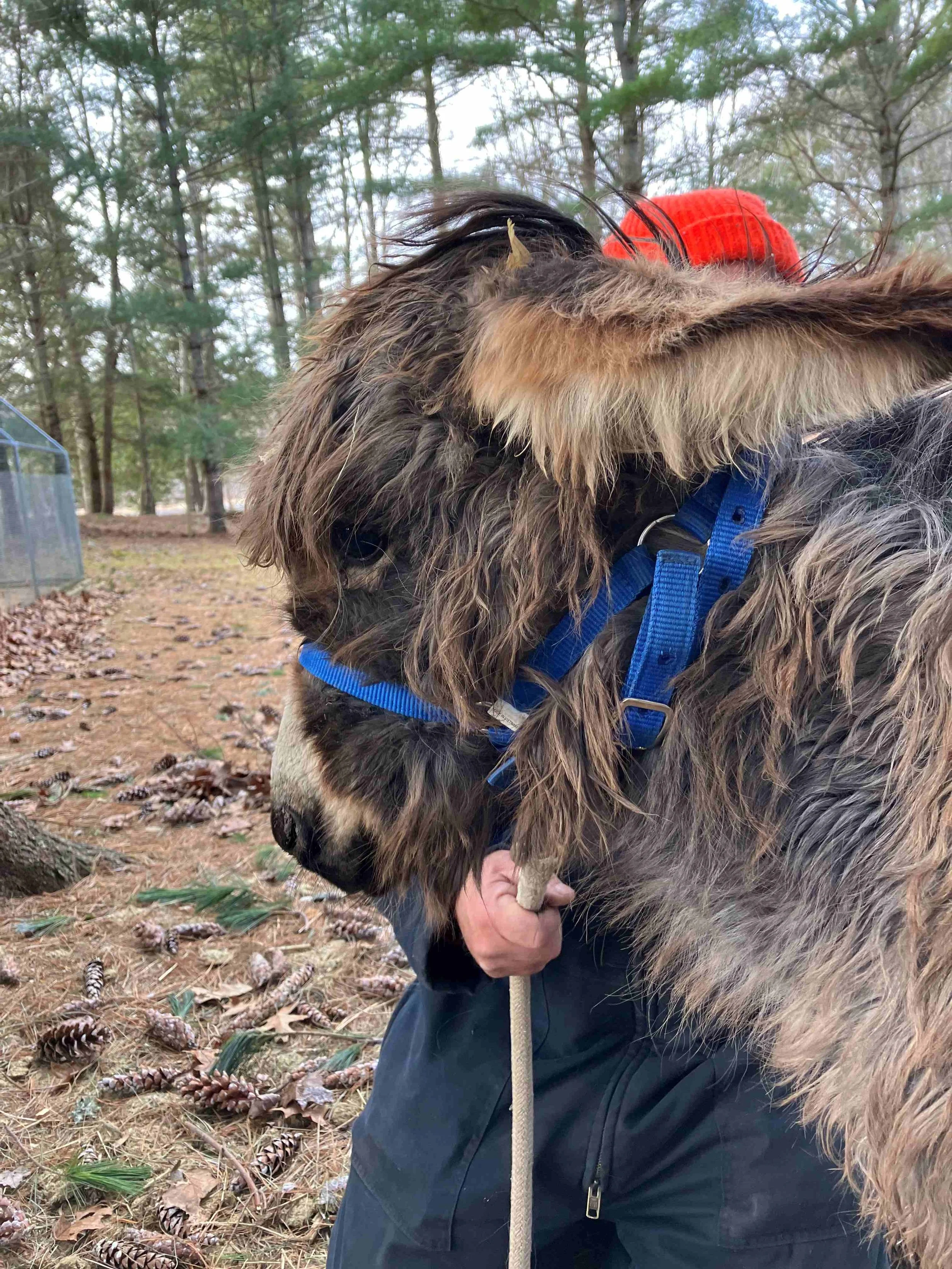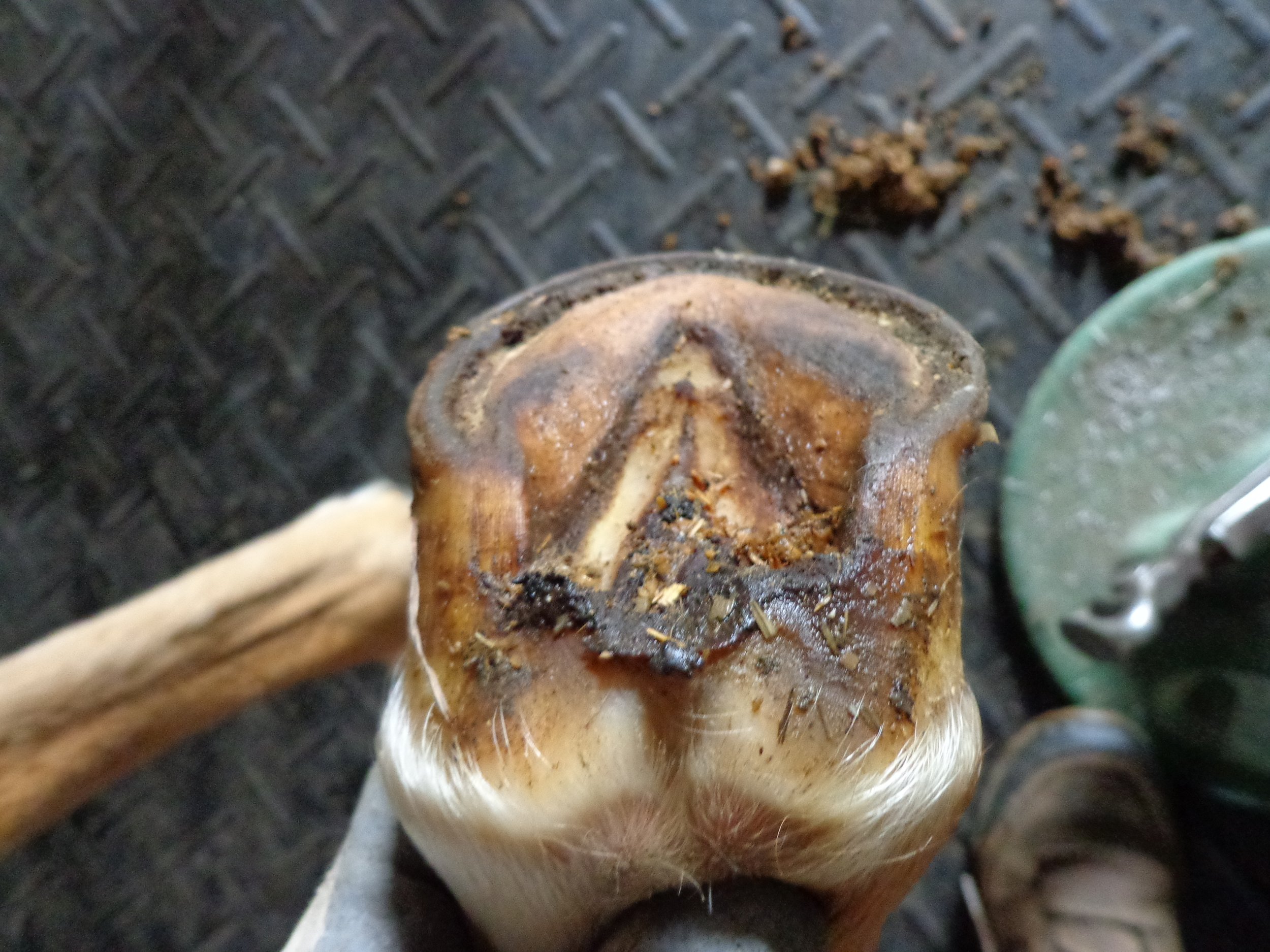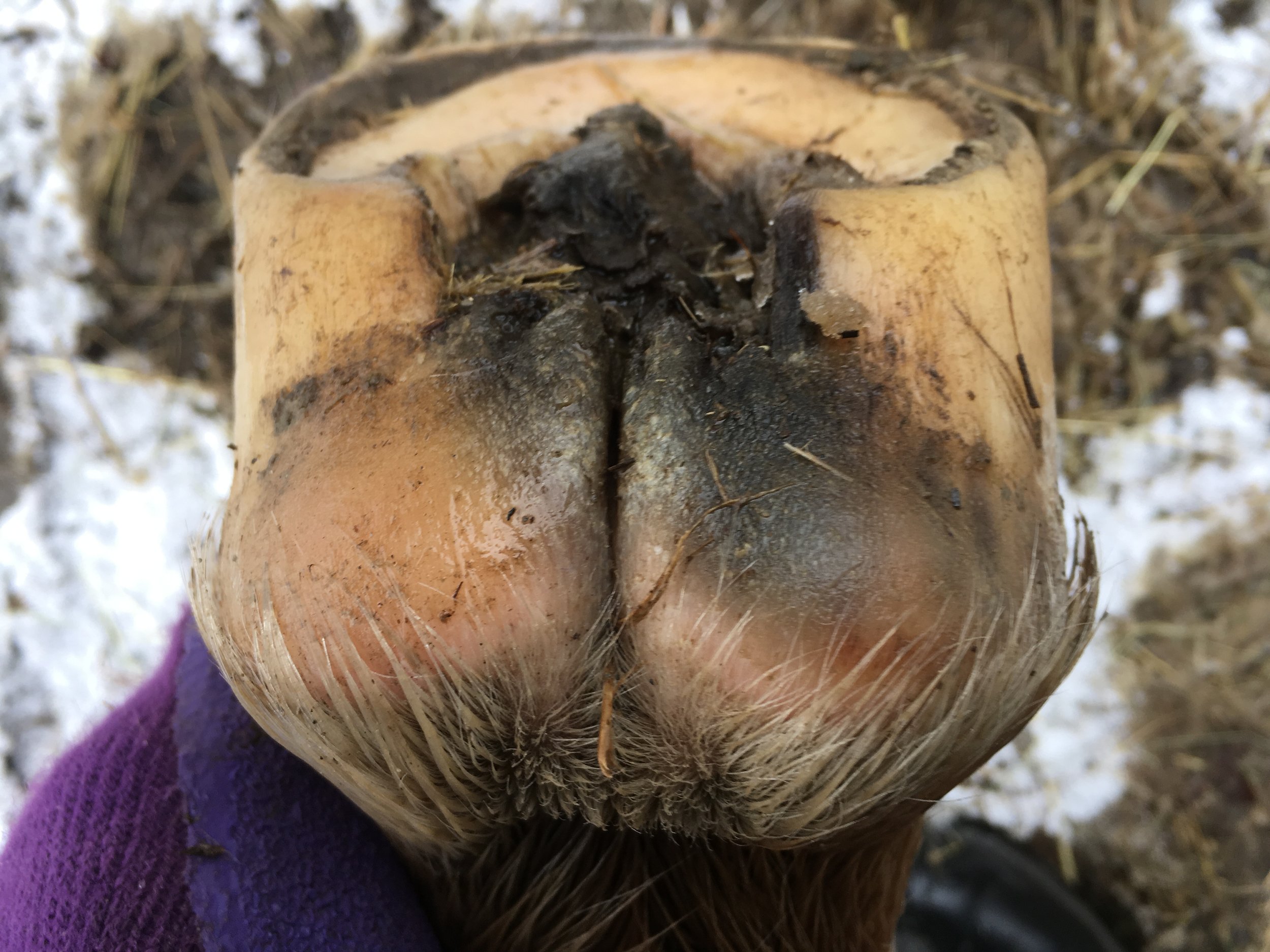Hoof, Body & Soul, Part III: Mission Impossible, unedited, by Gudrun Buchhofer. Blog 16, case #16
Author: Gudrun Buchhofer
Dedicated to all the horses suffering because of an unfinished foundation — their hooves.
What did all my client horses over the last 20+ years have in common? They needed to heal from atrophy of the back of the foot as well as other atrophied hoof structures.
CHAPTER 1
Atrophy, the fundamental cause for most all hoof pathology and upper body injuries
Deformed hooves /crooked feet / wry feet / twisted hooves / slipper feet / folded hooves / flared hooves
Case # 16
Annie
Writing about the seven-month-old donkey jenny was very hard to do. I had just performed her first trim four weeks prior when Annie was put to rest at such a young age. She was euthanized with a diagnosed connective tissue illness after her left hind hoof capsule had sloughed off. The hoof capsule was with me for six months until I was finally able to look at it. Annie's hoof confirmed my conclusion in regards to slipper feet.
My studies in the field led me to the realization that our foals are born with long unfinished hooves. The last step has to happen outside of the mother’s womb within the first hours and days of birth through movement over firm and abrasive grounds. This results in the reduction of almost half of the entire hoof capsule (including the long toe) and the activation of the back of the foot. When this projected process does not take place the hoof runs into pathology — a slipper foot in Annie's case.
When I first met her at the age of six months (week twenty-four) Annie was still waiting for the back of the hooves to finalize. She was still standing in the stance they instinctively know to take after birth, pressing the back of the foot into the ground and holding the toe up, wanting to activate a divergent hoof with shorter toes, steeper angles and true heels as well as to stimulate internal structures. She was still waiting for the first true foal hoof to kick in after birth as a divergent hoof (from heel to toe) and exchange with the newborn hoof. However, her hooves never experienced the initial (and necessary) wear and stimulation. That explains why they were so long plus they continued to grow aimlessly. Her toe walls had never touched the ground and atrophied. The first two photos show the slipper foot development.
Annie's left hind prior to her first trim at the age of six months (week twenty-four).
Annie's left hind prior to her first trim at the age of six months (week twenty-four).
.
The view from the back of the cadaver hoof shows that the lateral wall had crushed inwards and the toe wall is missing.
The lateral view from the cadaver hoof showing the lack of toe wall.
The frontal view on the cadaver hoof shows the lack of toe wall as well.
The different views of the hoof from four weeks after the first trim (the one that sloughed off) shows that the toe wall atrophied. Where is the toe wall?
I found atrophied toe wall in all donkeys and ponies with slipper feet I have ever worked on.
Now, compare Annie's hoof from week twenty-four and one of Cobe's hooves at week seven. We know Cobe from part I: Freedom from Pain of Hoof, Body & Soul, 26,27,33 and part II: My Search for the Truth of Hoof, Body & Soul, 27-40. He was exposed to gravel the moment he got up on his feet. He walked over firm and abrasive ground within the hour of birth. Cobe's first hoof after birth was coming in as a divergent hoof with a steeper angle and a shorter toe as well as from further back in support of the bone column. The remainder of the newborn hoof was properly discarded (pushed away from the body and worn). At seven weeks the back of Cobe's hoof is complementing the variant capsule angle-of-growth. Internal structures are serving as a cushion, frog and bulbs are on the ground in support of the bone column.
Cobe's hoof at week seven
Thank you for the teaching, little Annie. ♥
photos: Gudrun Buchhofer
Stay tuned for the upcoming cases (under my care for up to 20 years) in this blog series as a replacement for the unpublished part III: Mission Impossible of my trilogy Hoof, Body & Soul.
What did all my client horses over the last 20+ years have in common? They needed to heal from atrophy of the back of the foot as well as other atrophied hoof structures.
Q: Why do we need to change the upbringing of our baby horses and donkeys? A: To prevent senseless suffering.
Gudrun Buchhofer

